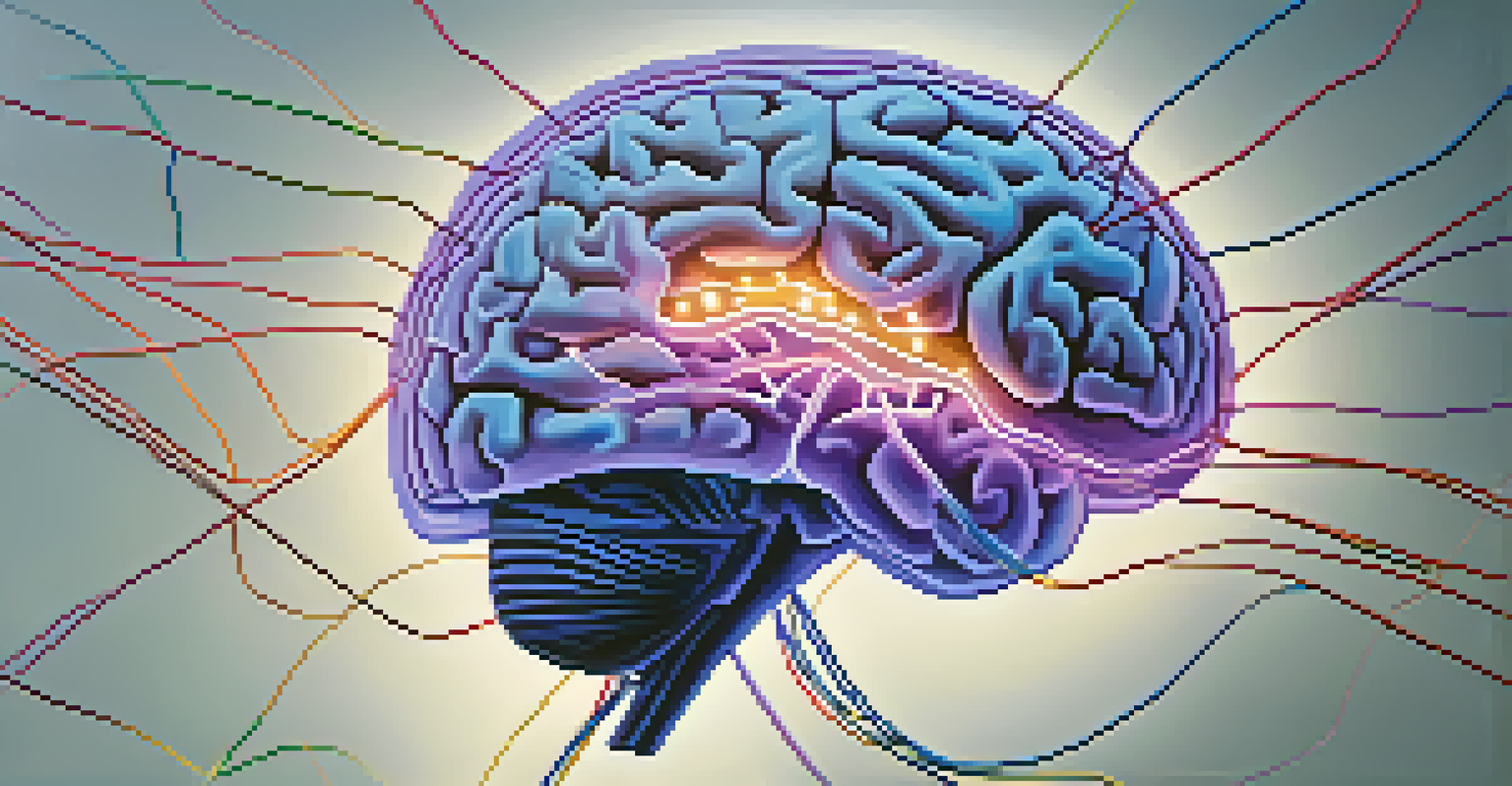The Science Behind Entheogens and Their Healing Potential

Understanding Entheogens: A Brief Overview
Entheogens are substances that are often used in spiritual or shamanic practices to induce altered states of consciousness. These natural compounds, such as psilocybin mushrooms, ayahuasca, and peyote, have been utilized for centuries across various cultures. The term 'entheogen' comes from Greek roots meaning 'generating the divine within,' highlighting their spiritual significance.
Psychedelics can help us see ourselves as we are, not as we think we are.
In recent years, there has been a resurgence of interest in entheogens, particularly in the context of mental health treatment. Researchers are exploring how these substances can facilitate profound psychological healing when used in controlled environments. This renewed focus has sparked conversations about their potential benefits and risks.
Understanding entheogens requires acknowledging both their historical context and modern scientific inquiry. As we delve deeper into their healing potential, we must consider the cultural, ethical, and therapeutic implications of their use in contemporary society.
The Role of the Brain in Altered States
When entheogens are consumed, they interact with the brain's neurotransmitter systems, particularly serotonin receptors. This interaction can lead to profound changes in perception, mood, and cognition. For example, psilocybin primarily affects the 5-HT2A serotonin receptor, which is linked to altered perceptions and feelings of connectedness.

During these altered states, users often report experiences that can be described as mystical or transcendent. These experiences can provide insights into personal issues, leading to emotional breakthroughs. Understanding the brain's response to these substances helps us appreciate their potential for psychological healing.
Entheogens and Mental Health
Entheogens show promise in treating mental health conditions like depression and PTSD, offering new avenues for therapy.
Moreover, neuroimaging studies indicate that entheogens can promote increased connectivity between different brain regions. This enhanced communication may allow individuals to process trauma and gain new perspectives, making them an exciting area of research for mental health treatments.
Therapeutic Applications of Entheogens
Entheogens have shown promise in treating various mental health conditions, such as depression, anxiety, and PTSD. In clinical trials, substances like psilocybin have led to significant reductions in symptoms for individuals who have not responded to traditional treatments. This has opened new avenues for therapy that prioritize personal experience and emotional healing.
The mind is like a parachute. It doesn’t work if it is not open.
One notable study found that patients with terminal cancer experienced decreased anxiety and improved emotional well-being after psilocybin-assisted therapy. These findings underscore the potential of entheogens to facilitate meaningful conversations around death and dying, challenging the stigma that often surrounds mental health treatment.
The therapeutic applications of entheogens are not just limited to severe mental health issues. Many individuals seek these experiences for personal growth, creativity enhancement, and spiritual exploration, highlighting the diverse ways in which these substances can contribute to overall well-being.
The Importance of Set and Setting
When using entheogens for therapeutic purposes, the concepts of 'set' and 'setting' are crucial. 'Set' refers to the individual's mindset—how they feel, their expectations, and their emotional state before the experience. 'Setting' encompasses the physical and social environment in which the experience takes place, including the presence of a trained facilitator.
Research indicates that a positive set and setting can enhance the overall experience and therapeutic outcomes. For instance, a calm, supportive environment can help individuals feel safe, allowing them to explore deeper emotional issues without fear. This careful preparation is essential for maximizing the healing potential of entheogens.
Set and Setting Matter
The concepts of 'set' and 'setting' are crucial for enhancing therapeutic outcomes when using entheogens.
Thus, creating an intentional space for these experiences can significantly influence their effectiveness. As the field of psychedelic therapy evolves, the importance of set and setting will likely remain at the forefront of discussions around responsible use.
Challenges and Risks of Entheogen Use
While entheogens offer exciting potential for healing, they are not without risks. Adverse reactions, including overwhelming anxiety or confusion, can occur, particularly in unsupervised settings. Therefore, it's essential to approach these substances with caution and respect, understanding that not everyone will have a positive experience.
Additionally, the legal status of entheogens varies by region, which poses challenges for research and accessibility. In many places, these substances remain classified as illegal drugs, hindering their integration into mainstream healthcare. Increased public awareness and scientific evidence are vital for advocating policy changes that support responsible use.
Finally, there is a need for comprehensive education about entheogens to ensure that individuals are informed about both their potential benefits and risks. Responsible use, guided by trained professionals, can help mitigate these risks and promote safe exploration.
Cultural Perspectives on Entheogen Use
Entheogens have deep cultural roots, particularly within indigenous communities that have used these substances for spiritual and healing purposes for centuries. These practices often involve rituals that emphasize connection with nature, community, and the divine. Understanding these cultural contexts is essential for appreciating the full scope of entheogen use.
As modern society grapples with mental health crises, there is a growing interest in integrating traditional practices with contemporary therapeutic approaches. This blending of knowledge can create a more holistic understanding of healing that honors both scientific inquiry and cultural wisdom.
Cultural Roots and Respect
Understanding the cultural significance of entheogens is vital to integrating traditional practices with modern therapeutic approaches.
However, it is crucial to approach these traditions with respect and sensitivity, avoiding cultural appropriation. By fostering dialogue between indigenous communities and modern practitioners, we can explore the healing potential of entheogens while honoring their historical significance.
The Future of Entheogen Research and Integration
As the stigma surrounding entheogens continues to diminish, the future of research and integration into therapeutic practices looks promising. Increasing numbers of clinical trials are underway, exploring various substances and their effects on mental health. This research could pave the way for new treatment protocols that incorporate these powerful substances responsibly.
Moreover, the growing interest in psychedelic-assisted therapy has sparked public conversations about mental health and wellness. Individuals are becoming more open to exploring alternative treatments, which may lead to broader acceptance of entheogens in mainstream healthcare.

Ultimately, the future of entheogen research will depend on continued collaboration among scientists, healthcare professionals, and communities. By prioritizing safety, ethics, and respect for cultural traditions, we can harness the healing potential of entheogens while navigating the complexities of their integration into society.